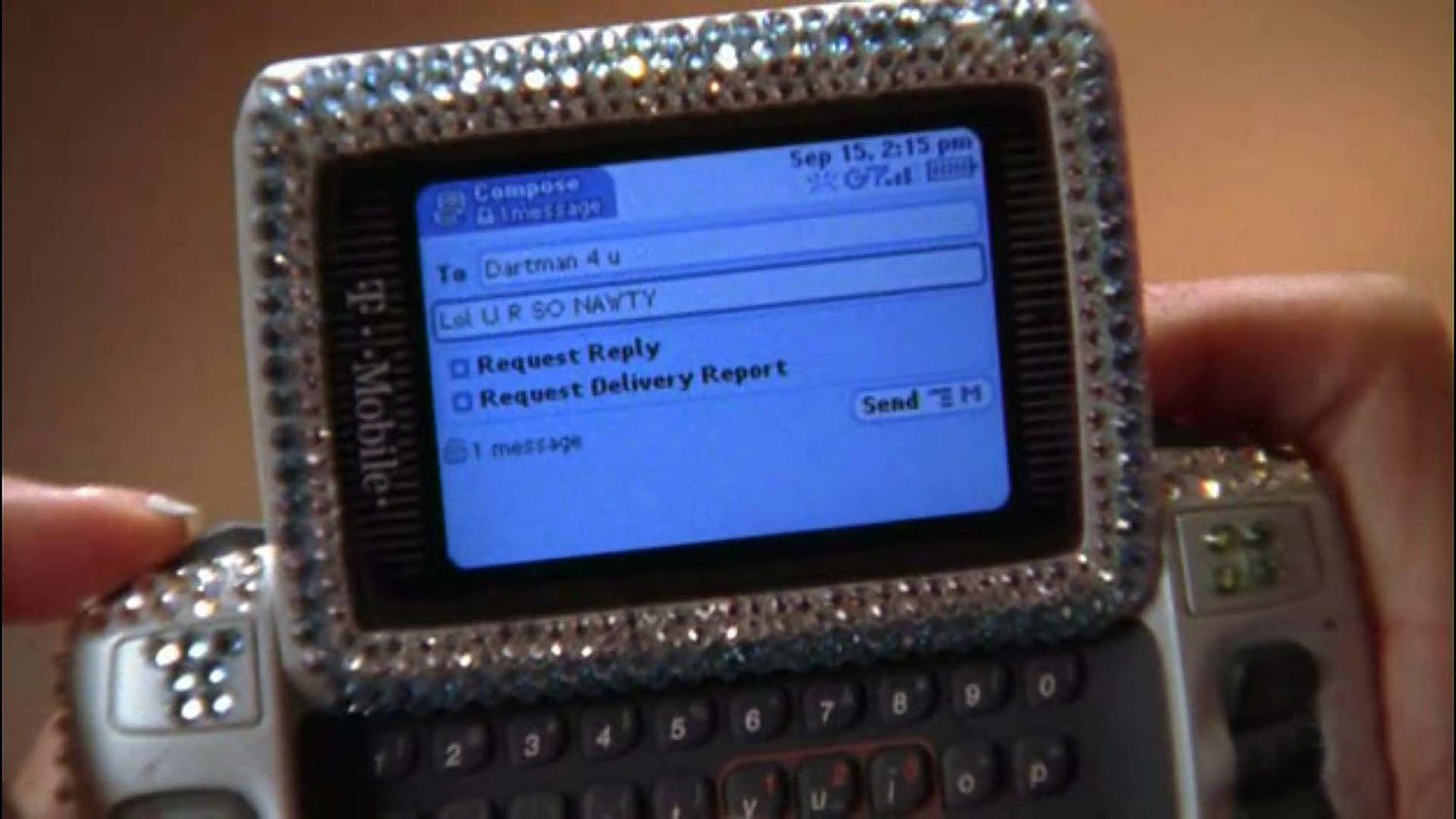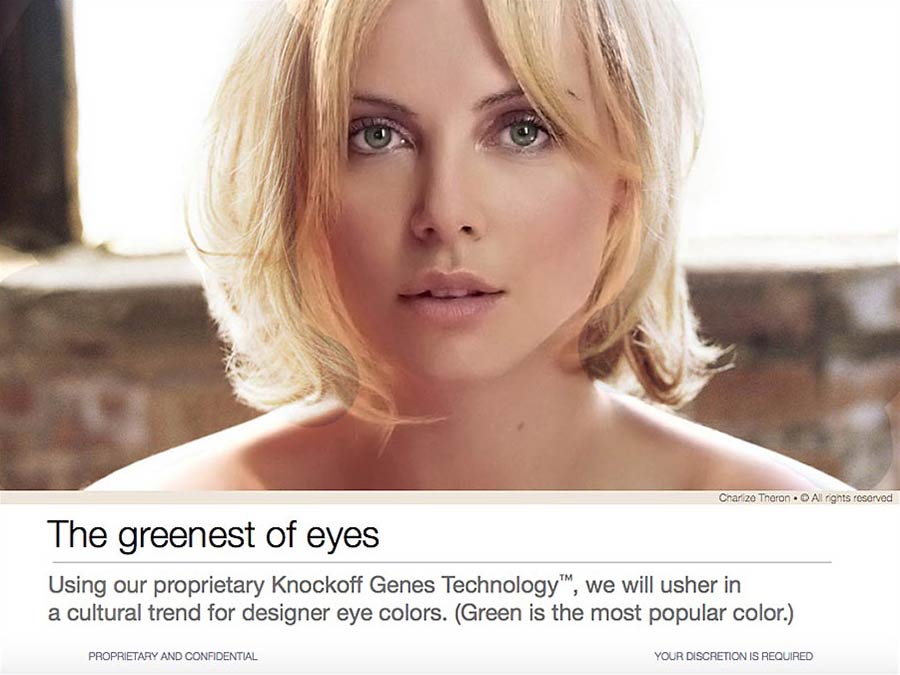Last week we kicked off The Engadget Interview with outgoing MPAA president Jack Valenti. This week journalist J.D. Lasica tries out the Sidekick II and speaks with Hank Nothhaft, CEO of Danger, Inc., about the device’s upcoming release, the market for wireless handhelds, the cachet of having Derek Jeter and Paris Hilton as Sidekick fans, and whether, if forced to at gunpoint, he’d buy a Blackberry or a Treo.

Give me the 30-second lowdown on Danger. You started back in 2000?
That’s right. We’re a 3 ½-year-old private company in Palo Alto, Calif., backed by such big venture capital firms as Redpoint, Mobius and Softbank. Most of our 140 employees are in Palo Alto, California, though a handful are in Europe, Japan, and around the U.S.
Let’s talk about the market before we get to your new device. What’s the evidence that people want a converged device that combines email, web browsing, a cellphone and organizer all in one?
We came at it from a data perspective. The founders and subsequent management who came on board all worked in data processing and SMS. We were all involved in what I call the wire line or the traditional Internet, so we came at this from the perspective of creating a device that would enable the mobile Internet, not a converged device. We were smart or lucky enough to take on new ideas and vet them with actual customers and carriers. There was enough interaction that we learned that to get to market and have a compelling device, we had to add a voice capability to the device.
Isn’t the handheld wireless device market hurting? BSquare ended its line of Power Handheld devices. Handspring couldn’t go it alone, and now you’ve got Palm beating a retreat in some areas.
Well, it really depends on the timing and positioning. From the time we introduced our first product in October 2002 to this minute, one of biggest issues in the company was in obtaining a manufacturing capability and a set of financials that would support demand for the product. The demand is there. We’ve had three periods where we’ve unfortunately been out of product for months at a time in some cases. So we’re experiencing strong demand. The advance orders for the Sidekick II and the Hiptop II [the same product sold under a different brand name] represent hundreds of thousands of units. If you look at the Treo and the Blackberry range of products, I think you’d probably agree that both of those products are doing very well.
Why is T-Mobile the only wireless provider that carries the Sidekick?
Danger works with eight providers worldwide selling the Hiptop device. T-Mobile provides nationwide coverage in the US, and brands the device as the Sidekick. We also have agreements with some regional players. And we continue to go after the other large GSM carriers here in the U.S.
Clearly, we would like to have broader distribution, but we also have a strong presence in Canada and pipeline of potential carriers in Europe.
Was any consideration given to giving customers the option to plug into free wi-fi instead of requiring a T-Mobile subscription?
Today, for a truly mobile device, given the state of development of wi-fi and battery life, it wouldn’t be practical. T-Mobile, I would point out, is the leader of creating hotspots in the wi-fi market. Down the road, there is going to be some accommodation by everybody to support not only mobile wide area networking functionality but through Bluetooth or wi-fi converged chip sets or some other means, people like ourselves will be figuring out how to provide both functionalities in the same form factor. It just makes sense.
I’ve heard the Treo described as geared toward businessmen, the Blackberry for Capitol Hill staffers, while the Sidekick 2 is targeting a younger generation and being touted as a fun toy.
It’s utilitarian and it’s fun. That’s certainly a marketing strategy. We went after what we perceived to be the largest market opportunity. If you look at the enterprise market, it’s clear that the consumer market is several order of magnitude larger.
Now that the Sidekick devices have been out for a while, who have you had the most success with? Urban 20something trendsetting gadget lovers?
We’re targeted to the 18- to 34-year-old on-the-move person who requires messaging and the ability to get information on the fly. The median age of our customers is 29 or 30.
What’s the coolest feature on the Sidekick II?
I think the compelling aspect of this product is the fact that we’ve been able to blend these applications together on a single device — messaging, email, web browsing, a phone service — with what I would call doing justice to each application. We make it available to the user through a very effortless, simple interface. I’d compare us to Apple’s iPod or to the TiVo. That’s our major achievement, we’ve simplified the complexities of all these phenomenal services so mere mortals can enjoy the fruits of this device.
If you’re already an AOL AIM user, you answer three quick questions and you’re operational — four questions if you weren’t an AIM user. You answer less than 10 questions to set up your email account and no questions to browse the Web.
Tell me about the ringtones — you’ve got some wild stuff on there.
Yeah, isn’t it fun? We have a lot of the standard stuff like dogs barking [he shows off a yelping canine] and dolphins chirping for my instant messaging, but we’ve gone a lot further through our agreements with Sony and others. T-Mobile got Kid Capri to do a ringtone rap about answering your Sidekick now.
You can download about 300 different ringtones for $1.99 or less. It’s painless, you don’t have to whip out your credit card. With a one-click buy it bills your T-Mobile account.
Can customers upload their own ringtones?
No. There’s an effort by the industry to make people pay for the content on these devices.
Too bad. What other little tricks are hidden away?
The application I like the most is the world clock. It’s got a regular clock, alarm clock, stopwatch. You can set up four other cities’ time zones. You can go to that icon and see the cities you’ve set up: London, Osaka, Chicago or whatever.
We also have a big following within the deaf and hard of hearing community for our instant messaging and its tie-ins with our other applications. Anyone can carry on 10 simultaneous IM conversations with 10 separate individuals at any one time. It’s like a mobile phone for a hard-of-hearing person.
Is there a killer app inside the Sidekick?
There are several popular applications on our platform across all eight of our carriers. For example, eighty percent of the people do use the device as their primary phone, so that’s very popular. But the thing that’s really amazing is the messaging activity that takes place. I call them messaging engines. The people who are using IM on these devices are sending and receiving 110 instant messages a day. They’re also doing 25-30 emails a day, and they’re accessing 25 web pages a day. We also support SMS on this, and have a range of around 4 SMS messages a day.
Did you say 110 IMs a day on average?
Pretty amazing, isn’t it? When we launched in October 2002, we were at seven instant messages a day and we figured that number was sure to go down because we had all these crazy, compulsive early adopters. And just the opposite happened — across all the carriers we have worldwide, the number is now 110.
Even though we’re 1 percent of T-Mobile’s installed base right now, we generate 10 percent of their data revenue.
If you’re a developer, how can you develop software for the Sidekick?
We’re Java compatible, and we have a software developers kit. People with Java programs can tweak them and port them over to run on our platform, using Java or J2ME. We’re just getting started but trying to reach out to the independent developer community. A lot of the new games and applications being launched by us now are certainly all coming from third parties.
What about allowing developers to create user-installable applications for the Sidekick?
Not user-installable. We’re a gatekeeper in that sense. they use our developer kit, they reach an agreement with us, and then through us they can have access to our user base.
I just read that you don’t see yourself as a device company and that you want to concentrate on the technology but leave the design, manufacturing, sales and marketing to someone else.
That should have said software, not technology. The strategy is and was that our expertise is in writing data applications, Java-based operating systems, and enabling things like online commerce. To prove that our concept was valid and exciting, we had to build a device and then hopefully attract consumer electronics companies to work with us.
So, we’ve sold several hundred thousand units, and now we’ve got the interest of several OEMs and signed up our first one, Sharp Electronics, which will be manufacturing the Sidekick II. Our role will be to launch several new additional products with Sharp, and we have an exciting new roadmap with them. And then we’ll sign up with other OEMs as well.
In the San Jose Mercury News, Mike Langberg complained about facial oils getting on the unit and wrote, “You’d think someone would figure out how to make a smart phone that didn’t end up slimed with human secretions.” Response?
I was a little surprised. That’s the first time I’ve heard that. You can use a headset if that’s bothersome.
A lot of young people today are using tiny keyboards on these kinds of devices to do thumb texting. Any reports of kids blowing their thumbs out?
Just the opposite with our device. In our original design, we had a relatively large qwerty keyboard, and as we got feedback, we had an overwhelming response not to reduce the size of our keyboard. People find the size to be very useable compared with the alternatives.
The Sidekick II will arrive in stores by late September?
It’s fairly imminent but I can’t speak for T-Mobile. Soon.
Retail price is $299 with a one-year contract?
That’s the list price, yes.
What’s the next realm for the Sidekick to assimilate? Video? An MP3 player?
We’re working with Sharp, and on the data-centric Sidekick II side, I think you’ll see the possibility of a larger screen, perhaps a higher-resolution screen. An easy prediction is that you’ll see a higher-resolution camera.
Certainly we’ll be looking at things like MP3 because this is a utilitarian but fun device. With an MP3, this would reduce the need for a separate device.
The other thing people like is this device is very good for playing video games, so if you’re riding the train or subway, it’s a nice way to pass the time. We’re selling six or seven times more content through our user base than the industry angle. So we’re looking at a lot of angles on how to improve the video game experience on the product.
So you’re not big on video?
MP3 would rate much higher than video on the range of what people would like to see on a mobile device. [Aside: A recent survey conducted by Jupiter Research found that although 78% of U.S. residents said they would listen to music on a portable device, only 55% said they would watch video that way.]
Video’s coming, but we’re looking at other things. Mp3 and wi-fi, with the right power consumption for broadband, would be much higher on the list right now.
You’re shooting for profitability by the end of 2005?
That’s right.
What comes after the Sidekick II?
Next year we are working hard to have more than one hardware device on the market, with different price points, features and functionality.
Where do you see the Sidekick and devices like it in 10 years? What will they be able to do, and how will they be used?
We’re talking about displacing camera, audio players, maybe video players. Certainly 10 years out the industry will have a different look to it. Mobile devices will become a PC displacement product. I don’t think you’ll see conventional laptops as we know them today — that functionality will be subsumed into some device.
Personally, I’m very much an online person, but I’ve gotten to the point where the only reason I’d take my laptop on a business trip is to do a Powerpoint presentation. Devices like ours and others are subsuming some of the functions of PCs.
Obligatory celebrity question: I’ve heard that Justin Timberlake, Jennifer Aniston and Paris Hilton use a Sidekick.
That’s true. I also know a guy who ran into Derek Jeter in a sports bar and he does email and baseball stats on the fly. I emailed Mark Cuban this week and he uses our device when he’s on the go. We gave away the Sidekick II to influencers. We had a product launch in Hollywood with T-Mobile and gave away the new devices to 30 to 35 celebrities. And since then we’ve given away hundreds more to celebrities and sports figures. No one’s been paid.
If you were forced to buy a cellphone that wasn’t the Sidekick II, which would it be?
Probably a Motorola for a voice phone, and a decent data-oriented device like a Blackberry, but that’s got limited Web browsing, or the Treo, but its keyboard is so small, so I might have to go upstream to an iPaq.









[…] Hank Nothhaft — An interview with the CEO of Danger, Inc., maker of the new Sidekick II personal communicator. […]